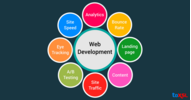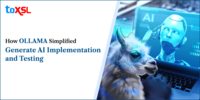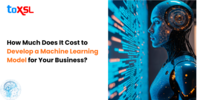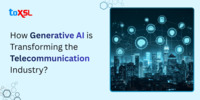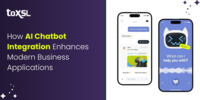- Jul 15, 2025
Share this post on:
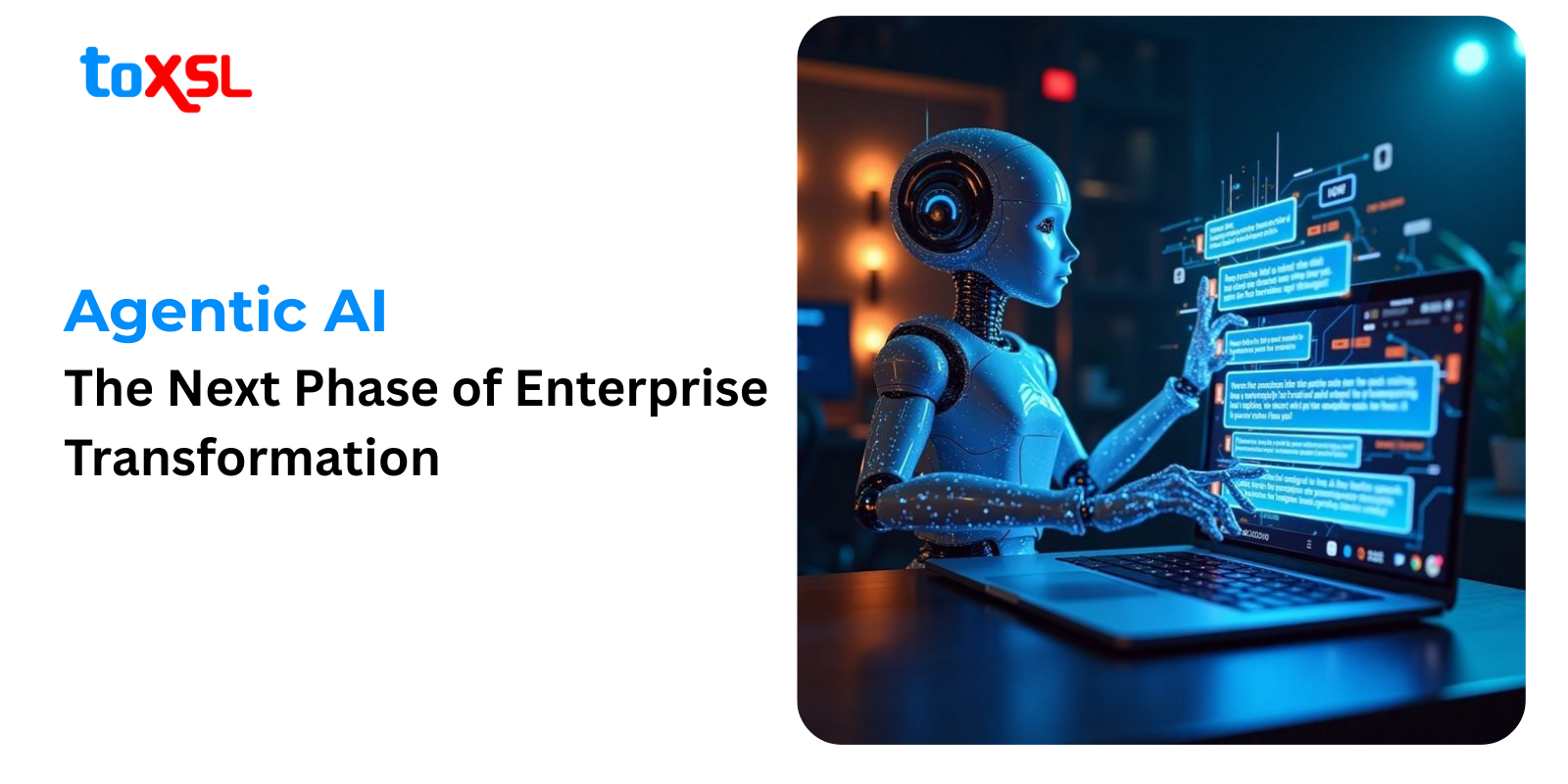
Artificial Intelligence has evolved a lot over the past few years, reshaping how companies operate, compete, and innovate. After Generative AI, Agentic AI has become the talk of the town. It is a class of autonomous AI systems that surpass traditional reactive models by independently reasoning, planning, and executing complex tasks.
Agentic AI, also known as autonomous AI, refers to intelligent systems that can make decisions, execute multi-step processes, and adapt dynamically to changes in their environment without continuous human supervision. Agentic AI follows acts proactively by:
Large Language Models (LLMs) and Foundation Models: Provide natural language understanding and generation to interpret complex instructions and contexts.
Reasoning and Planning: Break down high-level goals into actionable sub-tasks and optimize workflows.
Plugins and Action Modules: Execute operations across enterprise systems, APIs, and tools.
Contextual Memory: Maintain awareness of past interactions and current states to inform decisions.
Multimodal Inputs: Integrate text, voice, vision, and other data types for richer understanding.
Governance Framework: Ensure compliance, security, transparency, and human oversight mechanisms.
Benefits of Agentic AI
The adoption of Agentic AI delivers substantial benefits to enterprises by enabling autonomous, adaptive, and outcome-driven automation that transcends traditional task-based AI. Key advantages include:
1. Lower Operational Costs: Agentic AI lowers expenses by automating routine and repetitive tasks, including customer inquiries, data processing, and transaction validations. It can deflect up to 70% of Tier-1 support tickets, lowering the cost of operation. With that, Agentic AI offers 24/7 autonomous service without additional costs.
2. Faster Decision-Making: Agentic AI constantly analyzes real-time data and context to make informed decisions. This capability accelerates workflows, decreases average handle time in customer service. With that, it enables quick responses to dynamic business environments, improving overall responsiveness and agility.
3. Increased Process Efficiency: Agentic AI automates complex workflows that need cognitive functions such as understanding context and learning from past interactions. It decreases human errors and optimizes resource allocation. This results in smoother operations and higher productivity. For instance, it can autonomously manage ticket triage, a process that businesses use to prioritize customer inquiries, escalate issues appropriately, and customize customer interactions. This lowers turnaround times.
4. Automation of Repetitive Tasks: By handling time-consuming, repetitive tasks, including FAQs, order tracking, and account inquiries, Agentic AI allows businesses to focus on strategic and value-driven activities. This end-to-end automation extends across business processes, including finance, supply chain, and marketing, allowing constant and continuous optimization and error reduction.
5. Enhanced Customer Experiences: Agentic AI delivers customized, proactive, and customer support. It offers instant responses, hyper-customized recommendations, and anticipates issues before they escalate via predictive analytics. This leads to higher customer satisfaction (CSAT), improved retention, and strong brand loyalty.
6. Improved Collaboration: Agentic AI enhances collaboration and improves communication across various departments by integrating with various enterprise systems such as ERP, CRM, and supply chain tools. Agentic AI supports real-time strategy adjustments, predictive marketing, and agile responses to market changes, thus driving competitive advantage and higher ROI.
7. Increased Innovation: Agentic AI can analyze data sets, detect patterns, and generate actionable insights, empowering businesses to innovate continuously. It supports real-time strategy adjustments, predictive marketing, and agile responses to market changes, thus driving competitive advantages and higher ROI.
Working Process of Agentic AI
Agentic AI uses several AI models that talk to each other by sending messages. They can also use other tools and handle files by reading and writing them. These AI models often work at the same time but on their own, so it feels like a group of AIs working together instead of just one AI working alone. Let us look at the working process of Agentic AI:
Multiple Models and Roles: Usually, an Agentic AI system isn’t just one AI model working by itself. Instead, it’s a group of models that work together, each with a specific job. For example, one model might act like a team leader, breaking a big problem into smaller tasks and giving those tasks to other models. These other models do their part and then send their results back to the team leader, who checks and combines everything. This way of working lets the AI handle more complicated problems than a single model could on its own. Instead of doing everything step-by-step, different tasks can happen at the same time, which helps the system work faster and smarter.
External Tools and Data Handling: Agentic AI needs to use outside tools to do more than just create text. These tools can be things like APIs that get real-time information, databases that save data, or file systems that let the AI read and write documents. Tools like LangChain and LlamaIndex make it easier to connect AI models to these resources. This lets the AI search databases, find information online, or work with other software programs. By linking to things like email, spreadsheets, or customer support systems, agentic AI can act like a smart helper that does real tasks, not just answers questions. This helps work get done faster and more accurately, so people can focus on more important jobs. In short, connecting to external tools helps agentic AI become a powerful assistant that can handle many different tasks on its own.
Distributed Architecture: Unlike regular AI, which works one step at a time, agentic AI can do many things at once. Different AI models can work on different parts of a problem at the same time, making the system feel like a group of helpers instead of just one. For example, in an AI research assistant, one model might find useful documents, another might read and understand them, and another might write a summary. This makes agentic AI faster and better. But it can also be a bit hard to keep everything organized and make sure all the parts fit well.
Applications of Agentic AI
Agentic AI has become useful across a wide range of industries. Startups are developing apps using Agentic AI, and well-established companies are integrating AI into their existing systems. Here are a few applications of Agentic AI:
Healthcare: Agentic AI is helping healthcare businesses collect and monitor patient data, report unusual patterns, and suggest possible treatments. This helps doctors lower their workload and improve decision-making. AI-driven diagnostics and monitoring tools are becoming better with time and will be able to handle more complex tasks.
Gaming: In gaming, agentic AI can make characters feel more real and natural. Instead of following fixed scripts, these characters can respond differently depending on what the player does. They can create their own goals and remember past experiences with the player. This makes the game world more exciting, unpredictable, and fun to explore.
Finance: Agentic AI is helping the finance industry in real-time trading, better analysis of market trends, and suggesting investments to human traders. Also, Agentic AI helps businesses make more complex and informed decisions without constant human input.
The future of Agentic AI
The future of Agentic AI is bright and transformative. By 2028, it is expected that over 33% of enterprise software will have Agentic AI capabilities, with 15% of all business decisions being made autonomously by these systems. Agentic AI platforms will continue to evolve in their ability to:
- Autonomously plan and execute multi-step workflows across departments and systems, breaking down high-level goals into actionable tasks.
- They integrate seamlessly with enterprise tools such as CRMs, databases, and APIs, enabling real-time data access and interaction with existing software.
- Adapt and learn continuously from interactions and outcomes, improving over time without constant human intervention.
However, the journey is not without challenges. Early Agentic AI projects have faced hurdles such as high costs, unclear ROI, and integration complexities with legacy systems. Experts recommend focusing on use cases where Agentic AI delivers clear business value and rethinking workflows to fully leverage its strengths rather than simply layering it on existing processes.
Conclusion
Agentic AI represents the next major leap in enterprise technology, moving from simple automation to intelligent, autonomous systems that can think, plan, and act independently. Its ability to drive efficiency, reduce costs, and unlock innovation makes it a game-changer for businesses ready to embrace the future.
While adoption requires careful planning, trust-building, and ongoing oversight, the potential rewards are enormous. Enterprises that successfully integrate Agentic AI will gain unprecedented agility, resilience, and competitive advantage in the fast-evolving digital economy.
Contact ToXSL Technologies, a leading AI services provider company, to embrace Agentic AI and lead the next wave of innovation and redefine what’s possible in business.





